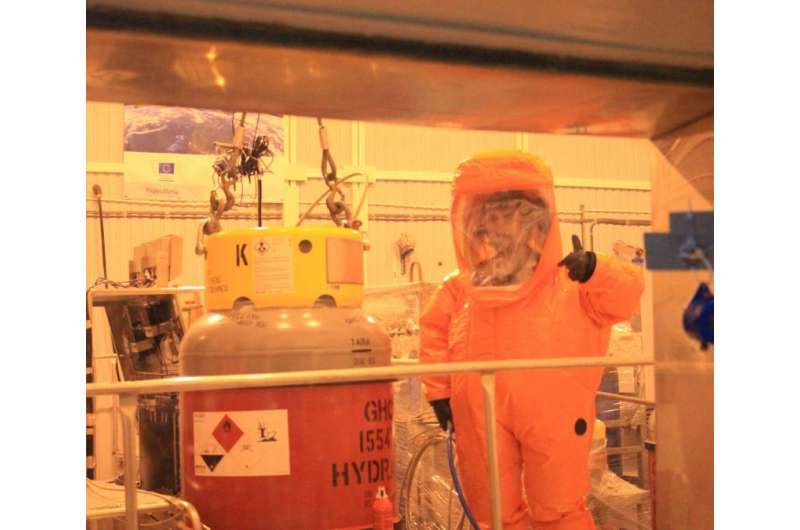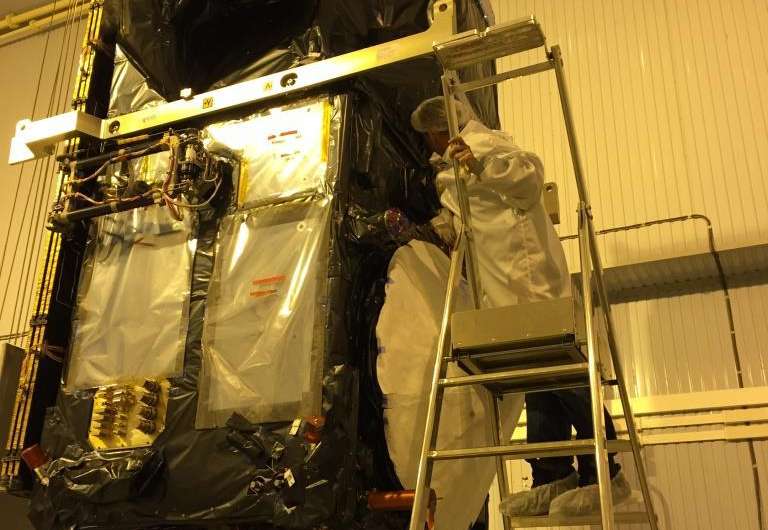Sentinel-3A fully tanked

With the launch of Sentinel-3A confirmed for 16 February, preparations for liftoff are charging full speed ahead. The tricky task of fuelling the satellite has now been ticked off the 'to do list' and the propulsion team is already decontaminating their equipment before returning home.
Official confirmation of the new launch date had to come before the team could start this delicate operation.
The hydrazine fuel is extremely toxic so only a few specialists remained in the cleanroom during fuelling. A doctor and security staff waited nearby with an ambulance and fire engine ready to respond to any problems.
After fuelling, the tank was pressurised to an 'intermediate level' and left to stabilise overnight. The following day, the team gradually increased the pressure to the level needed.
ESA's Sentinel-3A launch campaign manager, Kristof Gantois, said, "We are really happy to have passed this important milestone. The Thales Alenia Space propulsion team and our propulsion expert executed this challenging task brilliantly.
"We can now get ready for the next milestone which is when we place the satellite within the fairing half shells, sealing it from view. This will be the last time any of us see our baby so we shall all feel a little sad but at the same time elated that we are so close to launch."

The Plesetsk launch pad is also now 'fully certified', an issue which pushed the launch date to 16 February and the Rockot launcher is also being prepared for the big day.
The rocket upper stage is back in the cleanroom after a dry run out on the pad and the next steps involve cleaning the rocket fairing and making it ready to receive the satellite next week. Also, now that the satellite has been fuelled, the Breeze part of the upper stage will be fuelled before the weekend.
So, the launch campaign is progressing swiftly and the Sentinel-3A satellite will soon be in orbit around Earth to begin its job of monitoring the health of our planet.
Once operational, it will systematically map Earth's surface using instruments that include a medium-resolution multispectral imager, a precision infrared radiometer and a powerful synthetic aperture radar altimeter.
This workhorse mission will deliver data within three hours of sensing, 24 hours a day, 365 days a year. While these data will be fed primarily into the Copernicus Marine Environment Monitoring Service, all the Copernicus services will benefit to produce knowledge and information products in near-real time for a wide range of applications.
Sentinel-3A is essential for applications for ocean and coastal monitoring, numerical weather and ocean prediction, sea-level change and sea-surface topography monitoring, ocean primary production estimation and land-cover change mapping.
Provided by European Space Agency





















